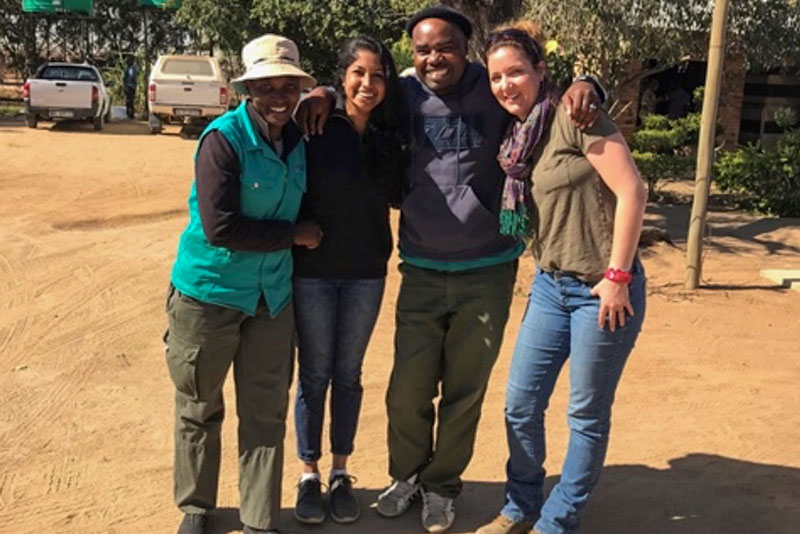 Team leading the research.
Team leading the research.
In the Mnisi community, a livestock-dependent community neighboring the Great Limpopo Transfrontier Conservation Area in South Africa, zoonotic pathogens contribute to as many as 77% of acute febrile illnesses.
Gender-disaggregated analysis has shown a risk differential for men and women, suggesting exposure routes for zoonotic infections should be further explored to inform gender sensitive risk mitigation strategies.
The project began May 2019 and is ongoing. The Ohio State team is led by Amanda Berrian, assistant professor, Department of Veterinary Preventive Medicine, who served at the primary investigator (PI), along with co-PIs, Elisabeth Root, professor, Department of Geography, and Pallavi Oruganti, professional veterinary medicine Student, College of Veterinary Medicine. Collaborative partners in the region included Ilana van Wyk, research coordinator, Hans Hoheisen Wildlife Research Station, University of Pretoria, and comunity leaders and residents in the Mnisi Traditional Authority.
Using a One Health approach focused on interactions between community residents, domestic animals, and the built and natural environment, this study investigated potential exposure pathways for zoonotic infections from a gendered perspective. This study used an ethnographic approach, combining household observations and focus group discussions to examine behaviors.
Participating households were randomly selected from three villages under the leadership of the Mnisi Traditional Authority in Mpumalanga. Four household observations were conducted in each village followed by two focus group discussions (one male/one male). Observations and discussions focused on daily productive tasks such as domestic animal care, water collection, food preparation and the division of labor.
Data were triangulated across methods, and analysis includes translation, transcription and thematic coding using fundamental grounded theory. Common themes coded from the observations and focus group discussions highlighted gendered roles in terms of household tasks and animal care duties. Other common themes included water collection and availability in the community, household income and time spent in the bush, overgrazing bush areas by cattle and wild animal interactions within the community.
By triangulating data from direct observations and focus group discussions, we noted gender differences for household tasks, animal care duties and environmental exposure. Male gender-typed tasks included cattle husbandry, grazing and slaughter. Female gender-typed tasks included household duties such as food preparation, cleaning and water collection from boreholes or residential taps. It was noted that men wore protective work clothes (such as long trousers and closed-toe shoes) more commonly than women did.
This study contributes to the understanding of risk behaviors and critical control points for zoonotic disease, a significant contributor to acute febrile illness in this rural, resource-limited setting. It advances ongoing One Health surveillance and education efforts in this transboundary conservation area and expands our socio-cultural understanding of the community to facilitate the development of future health programming.
We these findings, community health programs or interventions may be refined to address these risks and prevent zoonotic infections. For example, tick-bite exposure should be directed at both men and women based on their daily activities, such that prevention in men should target exposure from cattle and prevention in women should focus on protective clothing and tick monitoring during water collection. For water-borne zoonoses, such as leptospirosis, exposure prevention strategies at the household level should be targeted towards women.
This research has been published in the Lancet Global Health journal.